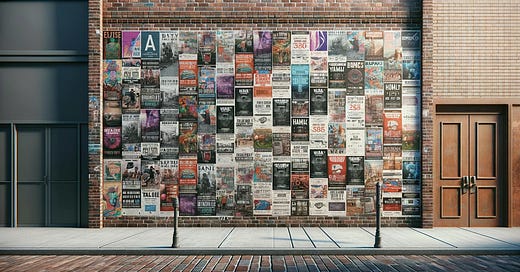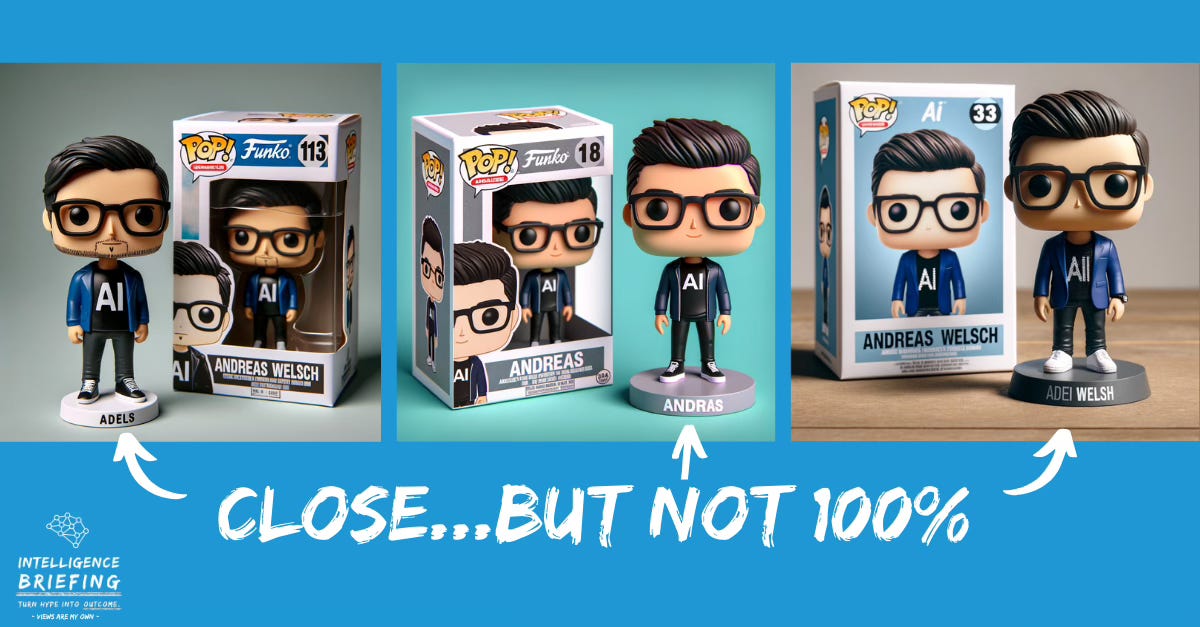Understanding Generative AI's Impact On Sustainability
How Generating Images To Discard Them Impacts Energy Use, Emissions, And Sustainability
As if getting our “triple-foam double-shot oat milk latte with caramel drizzle on top” wasn’t the biggest problem on our mind, we have a new first-world problem: AI-assisted image & video generation.
Let me explain…
Improvements And Limitations Of Prompts And Models
The images or videos you create using leading Generative AI tools rarely match your expectations on the first attempt. At least not in my case. Tools like Midjourney and DALL-E 3 (image generation) or Runway and Pika Labs (video generation) are powerful, but they’re not mind readers. And most of us are not robot whisperers either.
Sure, one approach for generating better output is improving your prompting skills. There are several style guides and examples publicly available. They’re a great start to give you some help and some inspiration. The one that I occasionally use for Midjourney is https://midlibrary.io. It provides a great library of styles.
On the other hand, vendors need to further mature the models underlying these products — and they will. Generating a 3- or 4-second-long video based on a text prompt is already an impressive technological achievement. But there’s more room for growth: 60-second long scenes, consistency between scenes, and entire AI-generated movies. You get the idea.
Recent updates to image generation tools like Midjourney (v5, v5.2, and v6) have advanced the tool significantly within the span of a few short months. For example, getting the model to generate more text more accurately has been a huge step forward. But it's not 100% reliable, yet. That’s why for every usable image you generate, you have a handful of images that you discard. And that’s the problem.
Environmental Impact Of Generating Images With AI
Generating images and videos has an impact on the environment. It consumes a considerable amount of energy. A recent study covered by MIT Technology Review1 goes into detail for image generation:
Generating 1,000 images…
requires as much energy as charging your phone, and
creates the same amount of emissions as driving in your gasoline-powered vehicle for 4.1 miles (~6km).
Consider how many images we create “just for fun”, to “try out AI”, to “see what it will do.” For the most part, we don’t use these images for anything useful. We might even discard them because they don’t meet our expectations. But along with that, we’re also increasing our environmental footprint.
We can argue that generating images with AI saves emissions compared to creating these images in the real world. There are fewer requirements to travel to places, use physical products and objects, and overall be able to create visual representations that would be expensive or even impossible to create/ capture otherwise. This makes absolute sense for stock images, ads, etc. that serve a commercial purpose. Especially, if they have previously required an extensive setup and budget.
The consumer side of image/ video generation is often a waste of energy and resources, though. Yes, even in this scenario: AI generates fewer emissions than you hopping in your car and driving to your “one-hour photo” place, having photos developed or printed, and driving back home. But at the same time: we didn’t have a studio in our basement with infinite models and talent, a personal stylist, endless possibilities untethered from physics, and seemingly cheap to generate as part of a subscription.
High Energy Consumption: Just A Concern For AI?
Okay. The technology is here. It’s impressive. It’s even useful to many (in addition to the “AI for fun” angle). And it will become only more useful as it continues to mature. Fine. As I’m thinking through all of this, though, I’m wondering: if AI consumes so much energy and produces so many emissions, why is nobody asking about the cost and impact of sending a text message, a selfie, uploading hours of content to YouTube, or streaming a movie?
Have we come to expect these technologies and conveniences to just work? Is the transactional power consumption negligible compared to image generation? And is generating images with AI only to discard them(!) the modern-day equivalent of all-you-can-eat, flat-rate models?
I’d love to hear from you: Why do you think this is an issue with AI, but binge-watching Netflix or sending unlimited text messages is not?
PS: This is not to discourage you from exploring AI and honing your skills. You absolutely should. We all should, so we maintain a relevant skillset. When doing so, though, let’s consider our impact on the environment
Become an AI Leader
Join my bi-weekly live stream and podcast for leaders and hands-on practitioners. Each episode features a different guest who shares their AI journey and actionable insights. Learn from your peers how you can lead artificial intelligence, generative AI & automation in business with confidence.
Join us live
January 16 - Andrea Isoni, Chief AI Officer, will discuss how AI leaders can prepare for the E.U. AI Act.
January 23 - Mark Minevich, Chief Digital AI Strategist, will cover the steps towards a more sustainable and ethical future with AI.
January 30 - Conor Grennan, Dean of Students & Generative AI Lead at NYU Stern School of Business, will provide actionable tips how to stay on top of Generative AI news.
February 09 - Bill Schmarzo, Professor & Author, will share how AI leaders can help increase their peers’ data & AI literacy.
Explore related articles
Watch the latest episodes or listen to the podcast
Follow me on LinkedIn for daily posts about how you can lead AI in business with confidence. Activate notifications (🔔) and never miss an update.
Together, let’s turn HYPE into OUTCOME. 👍🏻
—Andreas
MIT Technology Review. Making an image with generative AI uses as much energy as charging your phone. Published: 01 December 2023. Last accessed: 12 January 2024.












